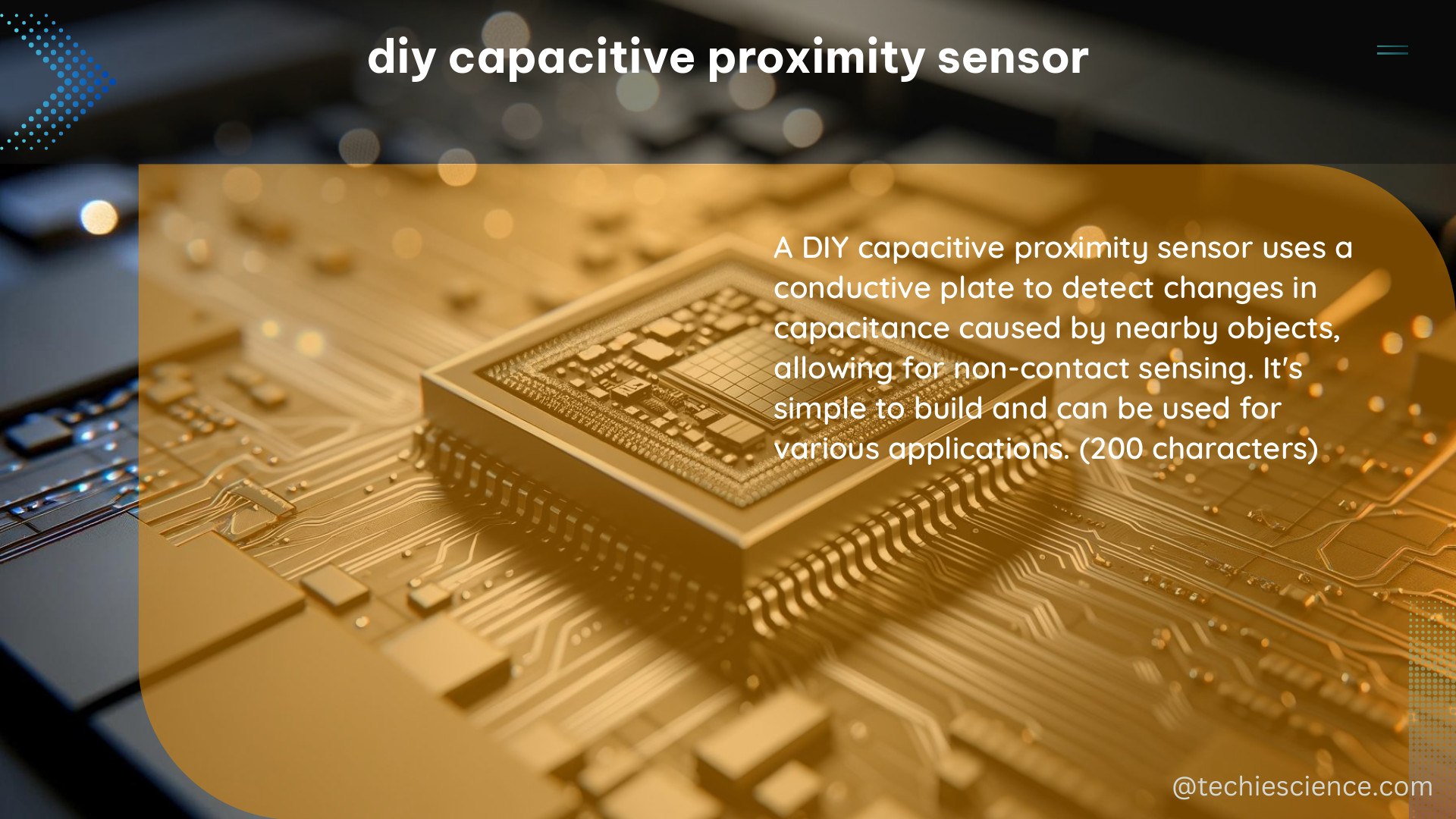A DIY capacitive proximity sensor is a versatile and cost-effective solution for a wide range of applications, from interactive art installations to smart home automation. By leveraging the principles of capacitive sensing, these sensors can detect the presence and proximity of objects without physical contact, making them ideal for non-invasive and touch-free interactions.
Understanding Capacitive Sensing
Capacitive sensing is a technology that relies on the ability of an object to hold an electrical charge. When an object, such as a human hand, comes in close proximity to a capacitive sensor, it alters the sensor’s electrical field, causing a change in the sensor’s capacitance. This change in capacitance can be detected and used to trigger various actions or responses.
Capacitance and Proximity
The capacitance of a capacitive sensor is directly related to the distance between the sensor and the object being detected. As the object moves closer to the sensor, the capacitance increases, and as the object moves away, the capacitance decreases. By monitoring these changes in capacitance, the sensor can determine the proximity of the object.
Factors Affecting Capacitance
Several factors can influence the capacitance of a capacitive sensor, including:
- Surface Area: The larger the surface area of the sensor, the greater the capacitance.
- Dielectric Material: The type of material between the sensor and the object being detected can affect the capacitance. Materials with higher dielectric constants, such as water or certain plastics, can increase the capacitance.
- Distance: As mentioned earlier, the distance between the sensor and the object being detected is a critical factor. The closer the object, the higher the capacitance.
DIY Capacitive Proximity Sensor Designs

There are several ways to create a DIY capacitive proximity sensor, each with its own advantages and considerations. Here are a few common approaches:
Knitted Conductive Yarn Sensor
One method of creating a DIY capacitive proximity sensor is to use knitted conductive yarn. By weaving conductive threads, such as stainless steel or silver-plated nylon, into a fabric, you can create a sensor that can detect the proximity of objects.
Advantages
- Flexible and conformable to various surfaces
- Can be integrated into textiles and wearables
- Relatively simple to construct
Considerations
- Requires specialized knitting or weaving skills
- Sensitivity may be lower compared to other methods
- Durability and reliability may be a concern
Trill Capacitive Touch Sensor
The Trill capacitive touch sensor is a popular choice for DIY capacitive proximity sensors. This rectangular sensor can detect multiple touch positions along its surface, making it suitable for applications like string instruments or touch-sensitive surfaces.
Technical Specifications
- Sensing range: Up to 12mm
- Response time: Less than 10ms
- Power consumption: 15mW
- Voltage range: 2.5V to 5.5V
- Digital output for direct microcontroller connection
Advantages
- Versatile and can detect multiple touch positions
- Relatively simple to integrate with microcontrollers
- Well-documented and supported by the maker community
Considerations
- Requires additional circuitry and software for full functionality
- May have limited sensing range compared to other methods
Custom Capacitive Sensor Designs
For more advanced DIY projects, you can design and fabricate your own custom capacitive sensors using conductive materials, such as copper or silver, and various substrate materials, such as PCBs or flexible films.
Advantages
- Highly customizable to specific project requirements
- Potential for increased sensitivity and performance
- Opportunity to learn advanced electronics and sensor design
Considerations
- Requires more technical expertise in electronics and sensor design
- Fabrication may be more complex and time-consuming
- May require specialized equipment or tools
Designing for User Needs
When creating a DIY capacitive proximity sensor, it’s essential to consider the end-user’s needs and preferences. This can be achieved through a user-centered design approach, as demonstrated in a study involving high school students designing assistive technology for people with disabilities.
User-Centered Design Process
- Obtain User Data: Conduct interviews and gather feedback from the target users to understand their specific needs, preferences, and pain points.
- Design Prototype: Use design software, such as Tinkercad, to create a prototype of the capacitive proximity sensor that addresses the user’s requirements.
- Validate Effectiveness: Test the prototype with the target users and gather feedback to ensure the sensor meets their needs and is effective in the intended application.
By involving the end-users in the design process, you can ensure that the resulting DIY capacitive proximity sensor is tailored to their needs and is more likely to be adopted and used successfully.
Conclusion
DIY capacitive proximity sensors offer a versatile and cost-effective solution for a wide range of applications. By understanding the principles of capacitive sensing, exploring various design approaches, and incorporating user-centered design practices, you can create a customized sensor that meets the specific needs of your project or application. Whether you’re working on an interactive art installation, a smart home automation system, or an assistive technology device, a DIY capacitive proximity sensor can be a powerful tool in your arsenal.
References
- Jacobs, J. (2018). The Role of Instruments in Music and Disability. Retrieved from http://instrumentslab.org/data/jacob/jtfh-thesis.pdf
- Design for Ergonomics-_compressed.pdf. (2021). Retrieved from https://flore.unifi.it/retrieve/e398c380-6eaa-179a-e053-3705fe0a4cff/Design%20for%20Ergonomics-_compressed.pdf
- Ahmed, N. A. S. K. (2020). Organic User Interfaces for Interactive Interior Design. Retrieved from https://theses.ncl.ac.uk/jspui/bitstream/10443/5130/1/Nabil%20Ahmed%20S%20K%20I%202020.pdf
- Trill Capacitive Touch Sensor Datasheet. (n.d.). Retrieved from https://www.blynk.cc/docs/blynk-edison-kit/trill-capacitive-touch-sensor-datasheet.pdf
- AAATE Conference Management System. (n.d.). Programme Overview. Retrieved from https://conference2023.aaate.net/program

The lambdageeks.com Core SME Team is a group of experienced subject matter experts from diverse scientific and technical fields including Physics, Chemistry, Technology,Electronics & Electrical Engineering, Automotive, Mechanical Engineering. Our team collaborates to create high-quality, well-researched articles on a wide range of science and technology topics for the lambdageeks.com website.
All Our Senior SME are having more than 7 Years of experience in the respective fields . They are either Working Industry Professionals or assocaited With different Universities. Refer Our Authors Page to get to know About our Core SMEs.